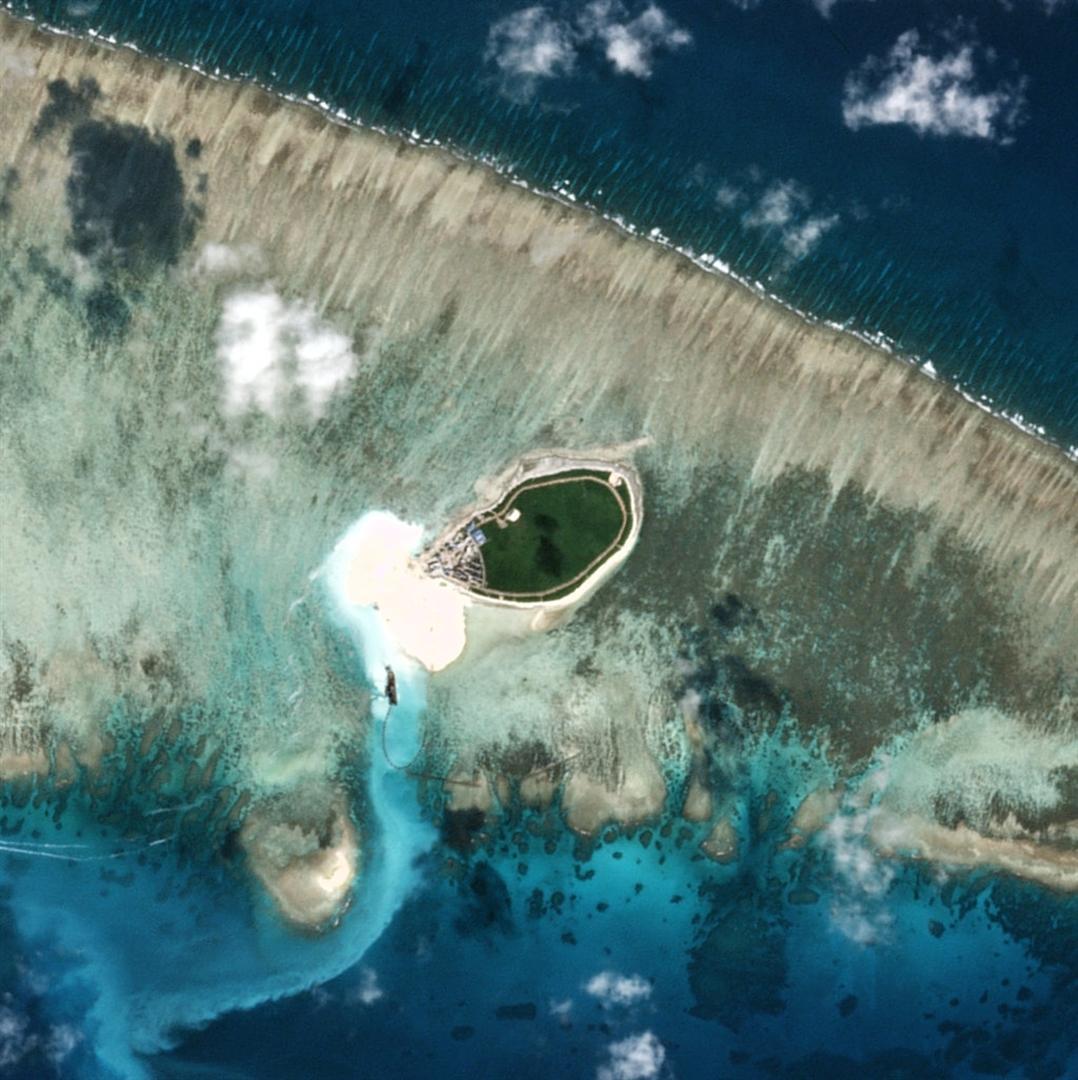China literally expanding, satellite images show
HONG KONG/ BEIJING - Reuters

China has quietly undertaken more construction and reclamation in the South China Sea, recent satellite images show, and is likely to more powerfully reassert its claims over the waterway soon, regional diplomats and military officers say.
With global attention focused on North Korea and Beijing engrossed in its Party Congress, tensions in the South China Sea have slipped from the headlines in recent months.
But with none of the underlying disputes resolved and new images reviewed by Reuters showing China continuing to develop facilities on North and Tree islands in the contested Paracel islands, experts say the vital trade route remains a global flashpoint.
Some expect China to land its first deployments of jet fighters onto its runways in the Spratly islands in coming months, while regional military officers say it is already using the new facilities to expand naval and coast guard deployments deep into Southeast Asia.
"They've built these extensive facilities and both Chinese civilian and PLA experts have always made it clear that when the
strategic time is right, they're going to start using them more fully," said Bonnie Glaser, a China security expert at Washington's Center for Strategic and International Studies.
"I think it is a question of when, rather than if, China will start to assert its interests more forcefully in the South
China Sea ... and that is likely to be at a time of China's choosing," Glaser told Reuters.
Rival claimant Vietnam, meanwhile, is nearing completion of reclamations and an extended runway on its base on Spratly Island, the satellite images show.
Calm after the storm
The build-up of the Spratlys symbolises China's growing assertiveness over the South China Sea during President Xi Jinping's first term and was highlighted in his address to the Communist Party Congress this month.
"Construction on islands and reefs in the South China Sea has seen steady progress," Xi told the Congress.
The issue is likely to come up during U.S. President Donald Trump's visit to Asia, which begins the last week of October.
"We remain concerned about tensions in the South China Sea, in particular those caused by land reclamation and militarization of disputed outposts and the willingness of some to resort to coercive tactics to assert their claims," said Michael Cavey, a spokesman for the U.S. State Department.
"We have consistently called on China, as well as other claimants, to refrain from any further land reclamation, construction of new facilities, and militarization of the disputed features."
Responding to Reuters' questions, Chinese Defence Ministry spokesman Ren Guoqiang reiterated the islands were irrefutably Chinese territory.
"You can't say that the construction on our islands and reefs in the South China Sea and the building of necessary defensive facilities is an expansion of military deployments," he said.
"We believe that at present the situation in the South China Sea is generally good, and all relevant parties should work hard
together to protect the peace and stability of the South China Sea."
China's ambassador to Washington, Cui Tiankai, said on Monday the United States should not try to "interfere" in regional efforts to resolve disputes in the South China Sea.
China has been seeking to soothe fellow claimant the Philippines and accelerating talks with the wider ASEAN grouping, amid concerns in Washington about the long-term security of the waterway through which some $3 trillion in trade a year passes.
In a speech in Singapore earlier this month, the most senior U.S. military chief in the region said even while Washington pushed Beijing for help on North Korea, it would still hold China accountable for actions that countered international rules and norms.
"We also want Beijing to do more to stop provocative actions in the East China Sea and the South China Sea, where the Chinese are building up combat power and positional advantage in an attempt to assert de-facto sovereignty over disputed maritime features," Admiral Harry Harris, commander of the U.S. Pacific Command, said.
China claims much of the area through its controversial nine-dash line, which overlaps rival maritime claims by Vietnam, the Philippines, Malaysia, Taiwan and Brunei.
Tactics, not strategy
A recent study by the U.S. government-linked RAND Corp weighing the risks of a conflict between the United States and China moved the South China Sea up its list of potential flashpoints.
Placing it above Taiwan but below the Korean peninsula, the study notes the waterway has "become the unanticipated focal point of U.S.-Chinese ... rivalry".
While the Pentagon has embarked on more regular freedom-of-navigation patrols, or FONOPS, to challenge Beijing's claims, some analysts believe Washington is struggling to counter China's creeping domination of the area.
"China appears to be pursuing a well-thought out and long-term strategy to achieve dominion over the South China Sea while America responds with ad hoc tactical manoeuvres," said Ian Storey, a South China Sea expert at Singapore's Yusof Ishak
Institute.
"FONOPS are tactics not strategy, and they have not made China rethink its plans for the South China Sea one iota." Ni Lexiong, a naval expert at the Shanghai University of Political Science and Law, said there was little need for China to dramatically increase deployments now, but much depended on the actions others.
"As long as others don't intentionally go and provoke clashes, things will be fine," he added. "The issue is that some countries, like the United States, go and stir things up."
















